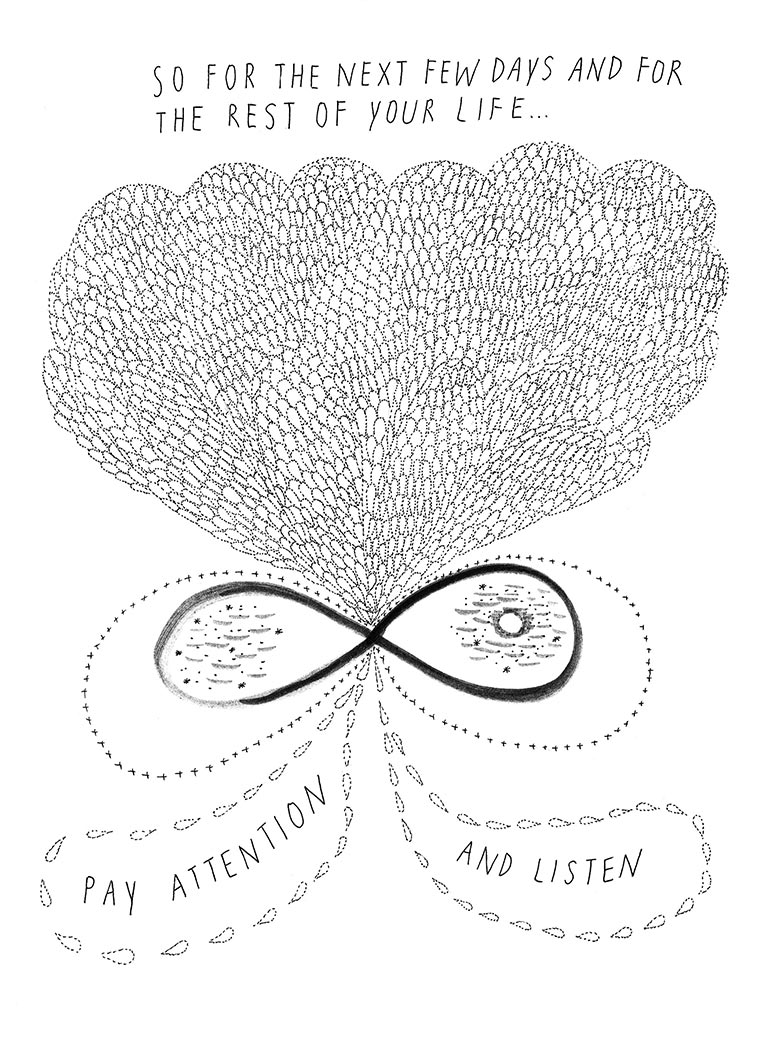From these unconscious states have come a wellspring of innovation and cross-disciplinary growth previously unseen. Amongst these innovations is the ongoing work of Los Angeles-based comic book artist Yumi Sakugawa, whose creative life was profoundly catalyzed by her discovery of meditation, and now challenges the artist to use the playful medium of comics to impart wisdom upon anyone that might be sucked in by her minimal yet profound works.
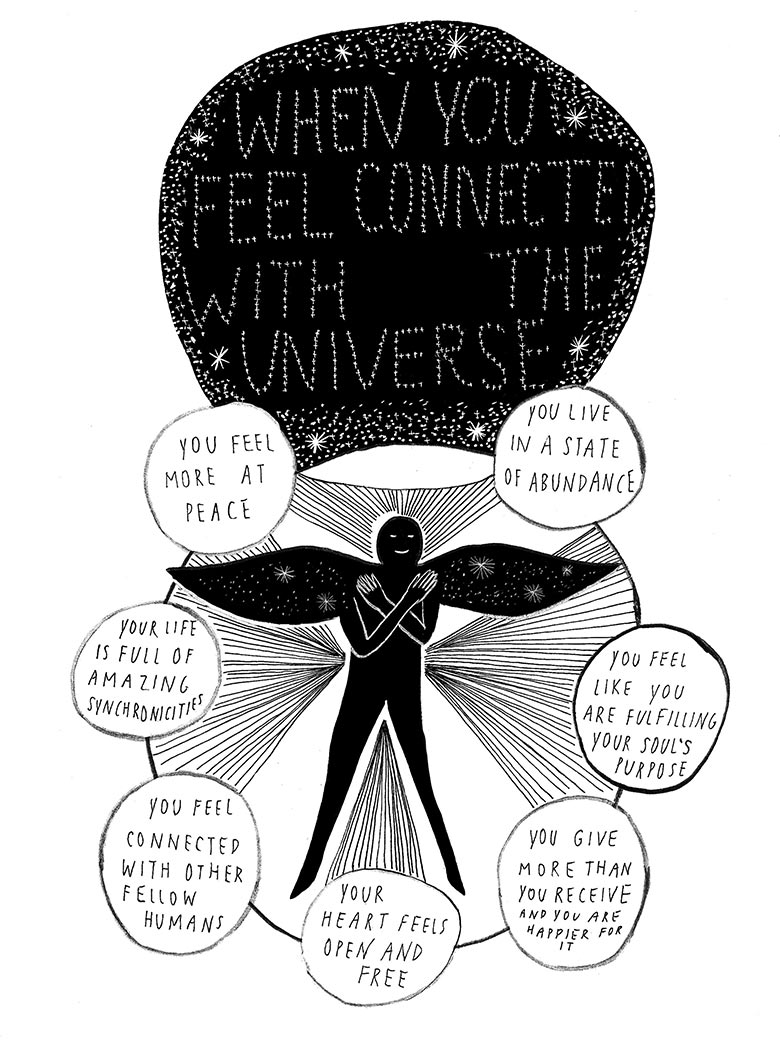 From Your Illustrated Guide To Becoming One With The Universe, 2014
From Your Illustrated Guide To Becoming One With The Universe, 2014
“Much of meditation is emptiness and finding so much in the emptiness. One thing that has always stuck with me from my art school education is that this one professor said that the less you put into the artwork, the more space there is for the viewer to put herself or himself into it,” recalls Sakugawa, who really took the advice to heart.
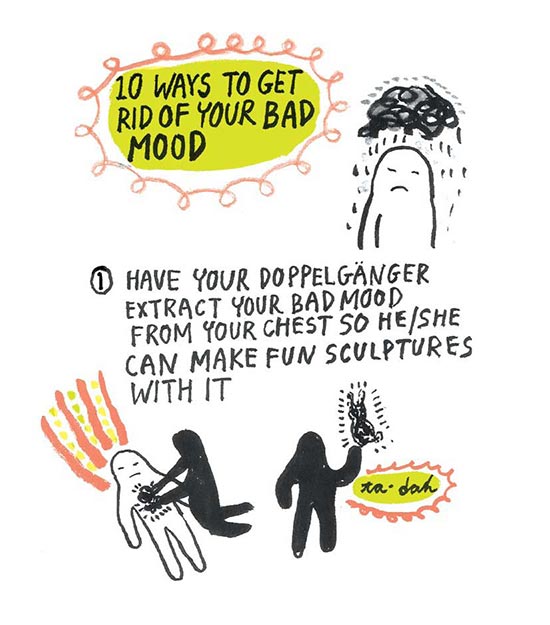 Though Sakugawa’s comics can easily be broken down into basic building blocks, they have a sincere complexity to them. Her latest book, There Is No Right Way to Meditate: And Other Lessons, is particularly focused on meditation, and utilizes tasteful watercolors to offer advice on everyday banalities, such as getting rid of bad moods, or larger-view goals, such as making intentions come true. Sakugawa details these lessons with epic statements that stir up deeply cosmic emotions as well as through the use of outlandish humor — but all ideas are connected by simple visual frameworks.
Though Sakugawa’s comics can easily be broken down into basic building blocks, they have a sincere complexity to them. Her latest book, There Is No Right Way to Meditate: And Other Lessons, is particularly focused on meditation, and utilizes tasteful watercolors to offer advice on everyday banalities, such as getting rid of bad moods, or larger-view goals, such as making intentions come true. Sakugawa details these lessons with epic statements that stir up deeply cosmic emotions as well as through the use of outlandish humor — but all ideas are connected by simple visual frameworks.
“Whether it’s minimalism on a visual level — where there’s a lot of empty blank spaces, or minimalism on a narrative level, where the dialogue and the description of the characters are very, very sparse — those are the kinds of stories that resonate with me the most, and those are the kinds of stories that I like to make for myself the best. Instead of telling viewers and readers what to think or feel, they have all the space to decide for themselves,” she explains. “It’s more their emotional Rorschach test than this experience that they have to feel.”
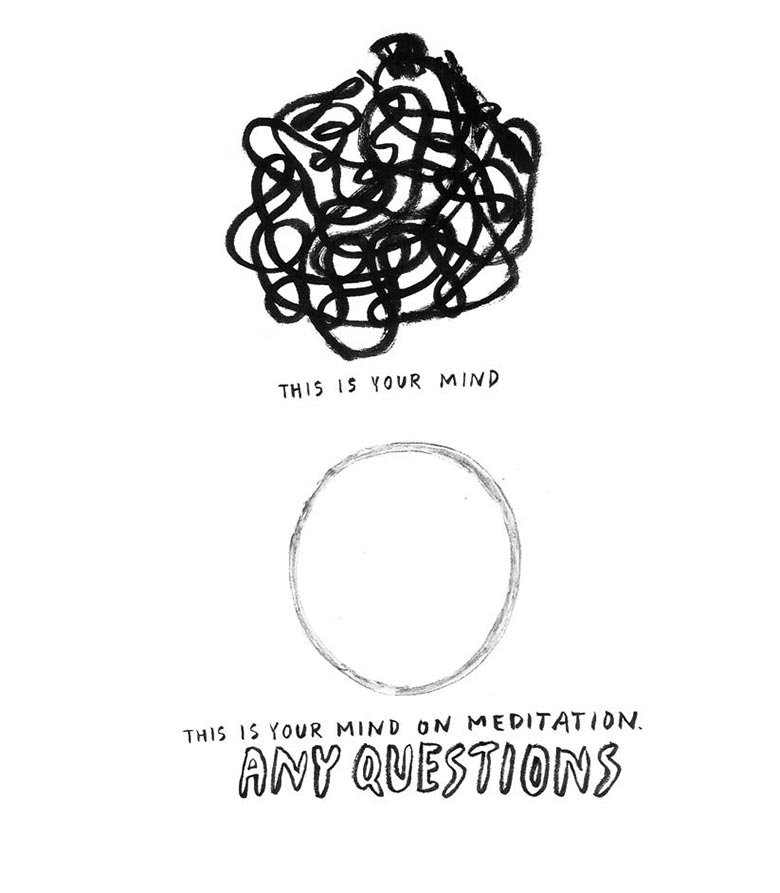 From There Is No Right Way to Meditate: And Other Lessons, 2015
From There Is No Right Way to Meditate: And Other Lessons, 2015
Meditation as a Grounding Foundation
Sakugawa has said it time and time again, in interview after interview: she fell into meditation in 2008, when she was massively depressed and living in Japan. She shares this detail not necessarily because it is convenient, but because it is absolutely foundational to her work.
“It was a window of time where I just so happened to learn more about meditation and mindfulness through colleagues and through my boyfriend,” she recalls, “and I didn’t even have a long-term project in mind. I was making comics about meditation because it was my own way of anchoring myself to why the practice was important to me and why it was helping me as a person.”
Discovering meditation was a rare a-ha moment for Sakugawa, and similarly groundbreaking moments have continued to be rare. Nonetheless, meditation is a practice she has incorporated more and more into her everyday life and art practice; it gives her fodder for comics about meditation, helps her clarify initial concepts, and aids in untangling themes from her works-in-progress.
“Over the days and weeks and months, you just have these moments of extra-clarity, and you could tell that it’s different from how you experienced time in this present moment than before you were meditating… if that makes any sense,” she expounds.
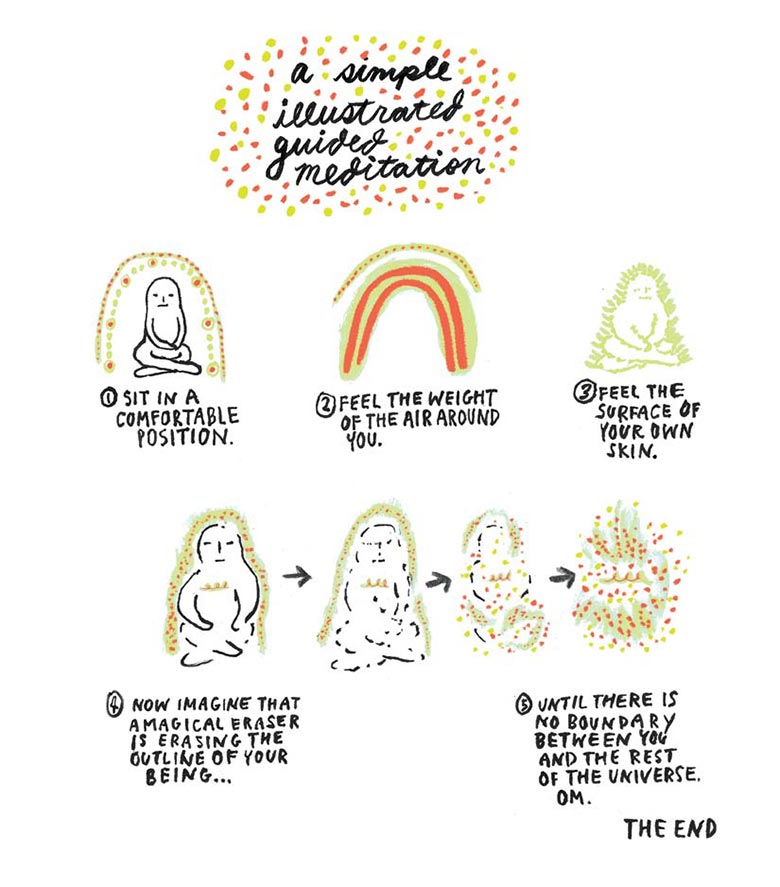 From There Is No Right Way to Meditate: And Other Lessons, 2015
From There Is No Right Way to Meditate: And Other Lessons, 2015
Over nearly a decade of meditative explorations, what began as regular blog posts became self-published zines, which — “luckily for me,” Sakugawa shares, “started turning into books.”
“It really was a side, side project, but I feel like only now, I’m starting to embrace being a self-help author, in addition to being a comic book artist, which I resisted for a long time.”
Part of the reason Sakugawa’s mindset has shifted through the years is because she represents a minority within a minority. It’s true that the topics she explores can generally be considered universal, but her demographic as a North American comic book artist — or even as an author, more generally — is decidedly not universal. Though Sakugawa says that conversations about race and gender have become more prevalent within the comics medium and that women are winning more awards than ever, she believes that a great deal of work still needs to be done.
“There aren’t enough Asian-American people in self-help — especially women, especially millennials — so I think it’s important,” Sakugawa notes. “Even though my comics aren’t specifically about Asian-Americans or Asian-American women, I just think it’s important for people to see that face in a sea of blue-eyed faces.”
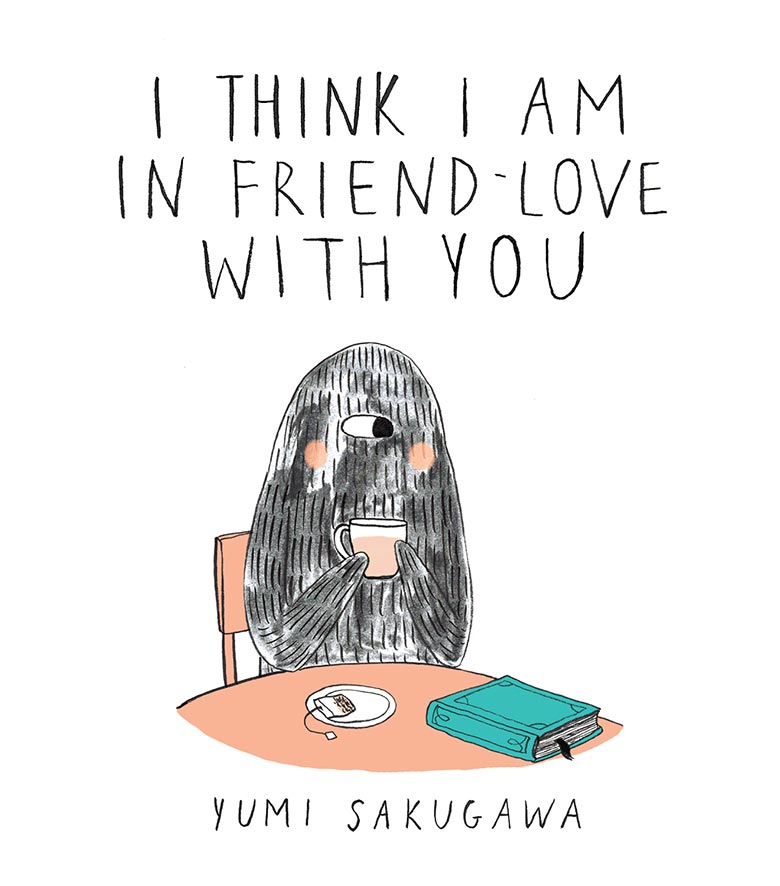
Confidence from Strange Dissemination
Sakugawa’s work does not exist in a bubble. Thanks to the internet and positive feedback from the wider artistic community, she has learned first-hand that her work resonates widely. Her first published book, late 2013’s I Think I Am In Friend-Love With You, jumpstarted her career; it was the first time Sakugawa experienced what it is to have her work go viral and become internet-famous.
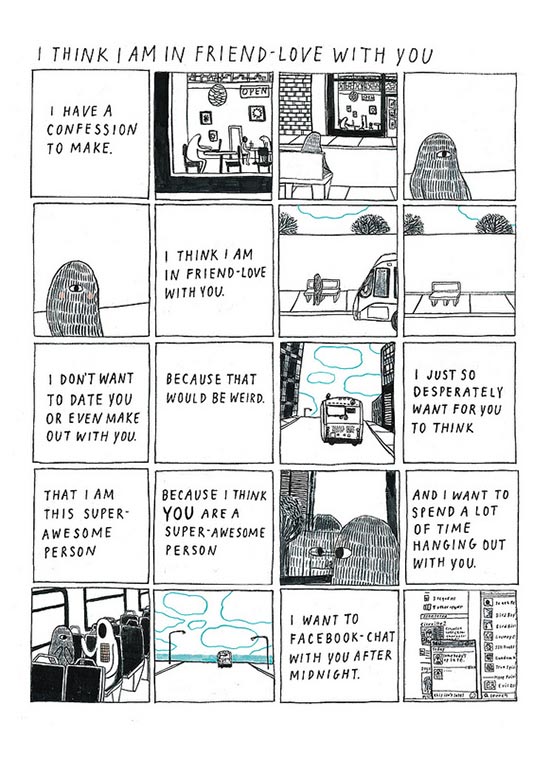 “[It] is always funny to me — not funny, but always a bit of a surprise to me, because I feel like a lot of the meditation and self-help work that I do, they’re primarily reminders to myself, not so much to other people, so it’s always a pleasant surprise that it helps people,” she shares humbly. “It just never gets old to me that people really respond to my work. It’s surprising every single time.”
“[It] is always funny to me — not funny, but always a bit of a surprise to me, because I feel like a lot of the meditation and self-help work that I do, they’re primarily reminders to myself, not so much to other people, so it’s always a pleasant surprise that it helps people,” she shares humbly. “It just never gets old to me that people really respond to my work. It’s surprising every single time.”
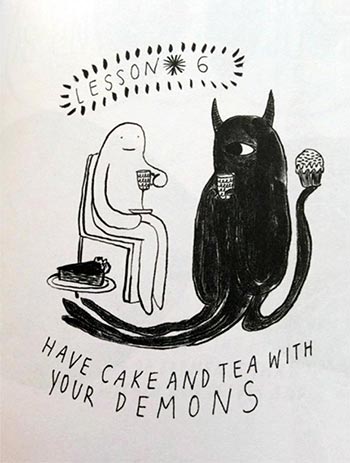
Following the success of I Think I Am In Friend-Love With You, her next biggest hits may be even more surprising. One which came to mind is “Have Cake And Tea With Your Demons”, a tiny chapter from 2014’s Your Illustrated Guide To Becoming One With The Universe, where an adorably peaceful white blob shares snacks with a one-eyed shadow creature — who’s also adorable, of course.
“For whatever reason, I think people just really like that chapter because they aren’t told enough that it’s okay to live with your weaknesses,” says Sakugawa. “It’s okay to have these dark corners of your mental space and not try to repress it and push it away.”
Along those lines is a thirty-second doodle Sakugawa made of a bunny lying prostrate, captioned simply by the words, “I did nothing today, and that’s okay.” The piece received thousands of notes on Tumblr, leading Sakugawa to hypothesize that, “People just want to be told that it’s okay to not be productive. People are relieved to hear that, so I’m happy to spread that message.”
Despite how prolific Sakugawa is — with the number of workshops she teaches and media she releases, is she really ever sitting idly…? — it actually does stand to reason that these one-offs, in particular, are resonant with Sakugawa’s audience. At their core, they actually reflect the source of the artist’s confidence in a fascinating way. What she has learned through trial-and-error is that embracing what might be considered “dark” or “idle” is actually very beneficial for her, artistically and as a person.
“Before I posted the comic, I was a little afraid to post it, because I thought it was really weird and really putting myself too much out there,” says Sakugawa, who also shares candidly that she was shocked by the popularity of that particular piece.
“With every new work I put out,” she continues, “if I’m a little scared to put it out, then that’s a good thing, and that usually leads to really good things for me. I use that as my own personal barometer of whether or not something is good: if it feels a little risky and scary to put it out there.”
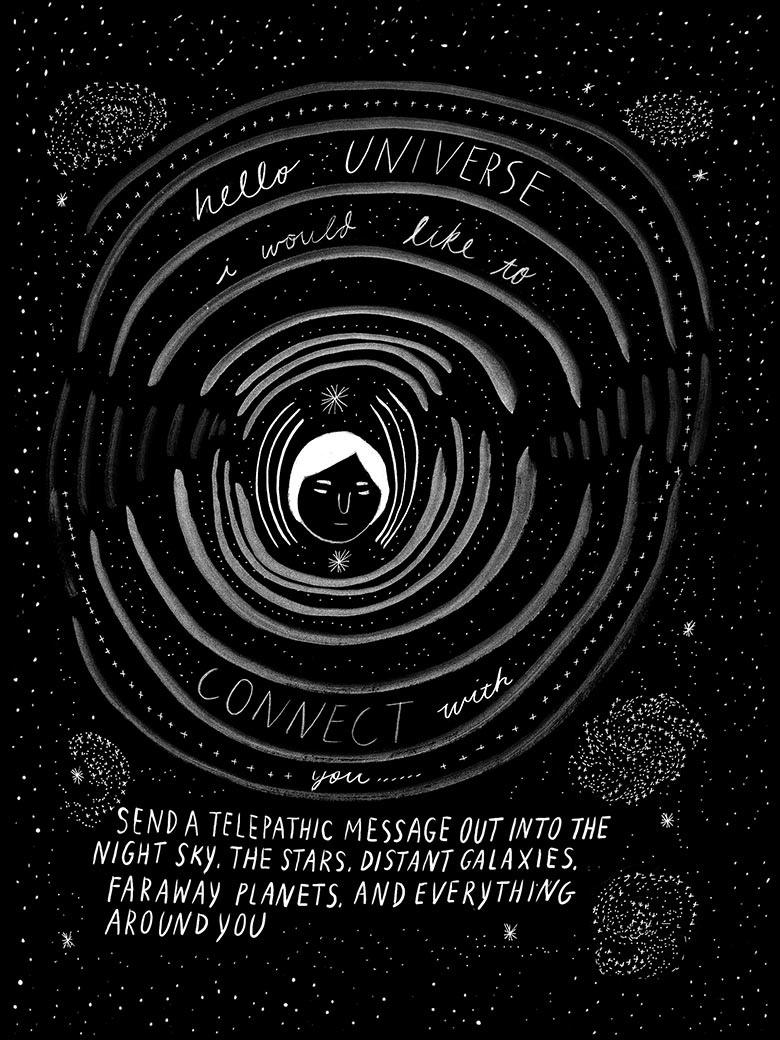
From Your Illustrated Guide To Becoming One With The Universe, 2014
Comics as an Expansive Destination
Sakugawa didn’t always want to be a comic book artist. In undergrad, she studied Painting at UCLA while exploring her many other passions in theatre, writing, and drawing angsty comics. It took a slow-process of elimination — of realizing she didn’t want to go the traditional route of academia to practice art through museums or attend grad school to become a Painting professor — that she arrived at indie comics, which blended her love of abstract storytelling with visual art.
“I looked back on the things I was most interested in, and it seems like such an obvious choice now, in retrospect, but [I focused on what] I’ve always been interested in,” shares Sakugawa.
To leave the academic art world and fall into the zine world is to essentially embark on a whole new creative path. It requires different connections and a different mentality. In her last year of college, Sakugawa finally made the decision to pursue comics, and to her benefit, things unfolded blissfully. She was immediately exposed to more comics and easily made comic friends. Those connections led to the zines and books that Sakugawa now makes her living from. Yet the process was slow. It required that she gradually scale back her hours at her then-day job so that she could increase her own art hours.
“When they’re just starting out, a lot of young people see it as an all-or-nothing situation, where either you have a day job or you’re a full-time artist,” she says. “For me, as a comic book artist, I feel especially lucky, because I don’t have to rely on expensive equipment or a crew of people to make the art I want to make. If you’re doing comics, it’s very doable to do it in your free time.”
The freedom Sakugawa has found in comics, and the modest ability to live as an artist, defines success for her.
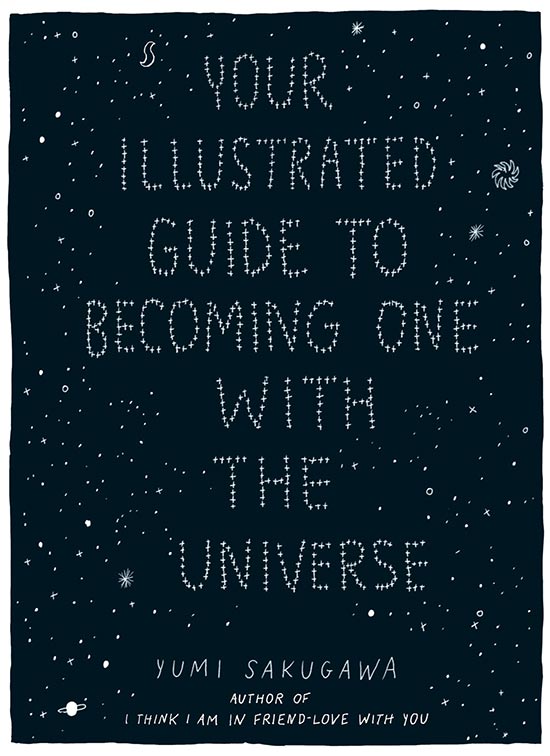 “So long as you’re financially sustainable, you’re really happy with the work you’re doing, and you’re still in the game, that’s great,” she states. “I wouldn’t say I’m poor, but I’m definitely not rich, and I’m nowhere close to buying a house like some of my peers. But I’m also really happy with my life and the freedom living this life brings, and even though it’s unstable and I have no idea what lies in the future for me, I’m really enjoying what I’ve built for myself, so I feel like that’s successful.”
“So long as you’re financially sustainable, you’re really happy with the work you’re doing, and you’re still in the game, that’s great,” she states. “I wouldn’t say I’m poor, but I’m definitely not rich, and I’m nowhere close to buying a house like some of my peers. But I’m also really happy with my life and the freedom living this life brings, and even though it’s unstable and I have no idea what lies in the future for me, I’m really enjoying what I’ve built for myself, so I feel like that’s successful.”
“I used to have all these benchmarks when I was younger,” she continues. “I thought, ‘Oh, if the New York Times wrote a review, then I’m successful’ or, ‘If I have a New York Times Bestseller then I’m successful,’ and now that I’ve had a few books under my belt, I’m not as interested in that.”
Sakugawa is a published book author, but the flexibility of comics allows her fans many entry points into her work. While the wider world can purchase beautifully printed books via major retailers, those who would rather not spend money can find her pieces online, and zine lovers can enjoy black-and-white photo-copied pamphlets. All of these options appeal to Sakugawa.
“I like the instant gratification of posting something online,” she details. “I think people really like the physicality of a zine, because it’s personal and stapled and handmade. And of course, I love books, because the publishers take care of putting everything in all the bookstores across the nation. You don’t have to lift a finger. I really embrace all formats.”
“I feel like — especially if you’re a comic book artist — there’s no reason to limit yourself to just one form. They’re all great,” she concludes.
Sakugawa spent most of her early 20s hunkering down with the mediums which interested her. Comics will probably always be a part of her practice; her upcoming projects, slated for well past 2017, involve a DIY lifestyle book suitable for outlets like Urban Outfitters, and “a book of meditative comics geared towards artists about the creative process”. In her early 30s, Sakugawa is beginning to feel the need to expand once again — perhaps by reintroducing her academic training and love for theatre into her practice.
“Now it’s not so much about the medium, but more about the message, and what mediums can support that message,” she explains. She is now considering her work on a more conceptual and theoretical level, by truly embracing her ability to nonchalantly expound deep life lessons. A 2015 Giant Robot Biennale resparked her interest in doing installations and multimedia pieces which inspire meditation, and she is increasingly excited to explore different ways to share her message.
“I’m thinking more about how I can emotionally and spiritually support people in ways where I don’t have to be there, but my message is spread to more people on a national and global scale. I feel like that is more exciting to me than sort of having arbitrary external validations,” she states.
And when asked to sum up some important life lessons, Sakugawa does so in her classically easy-to-digest way.
“A couple things come to mind. One of them is, ‘Love yourself; you’re doing okay.’ The other one is, ‘Pay attention and listen,'” she says simply. She then hesitates for a moment and mulls over if she has more to say, before concluding with a gentle smile, “I think that sums it up, actually.”
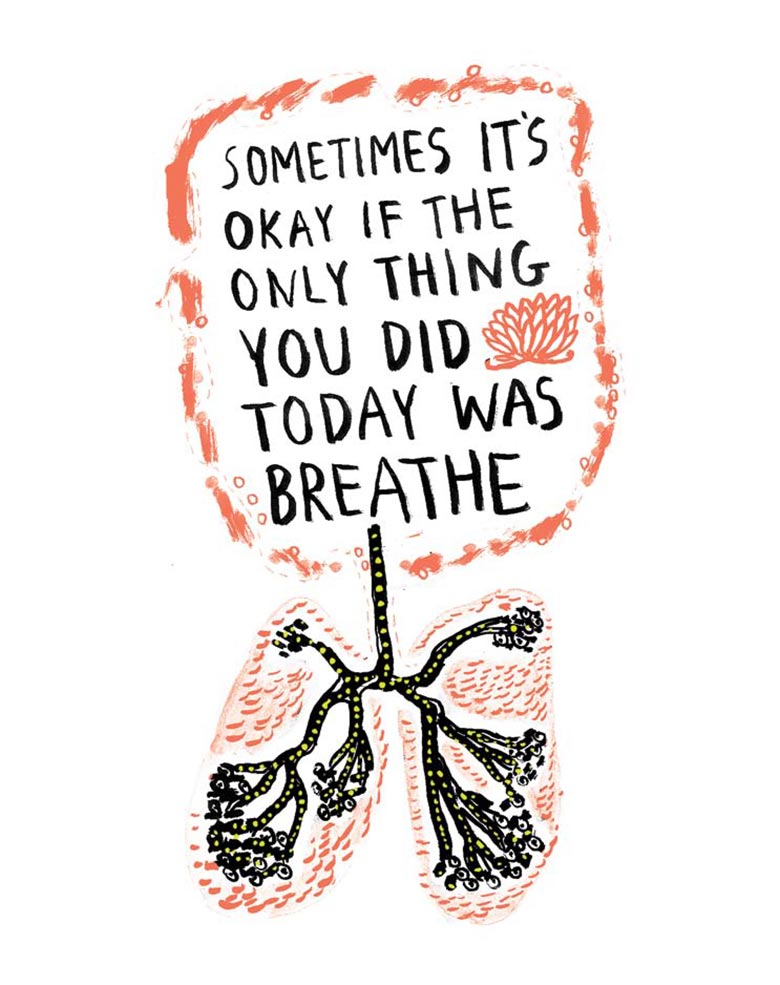
From There Is No Right Way to Meditate: And Other Lessons, 2015
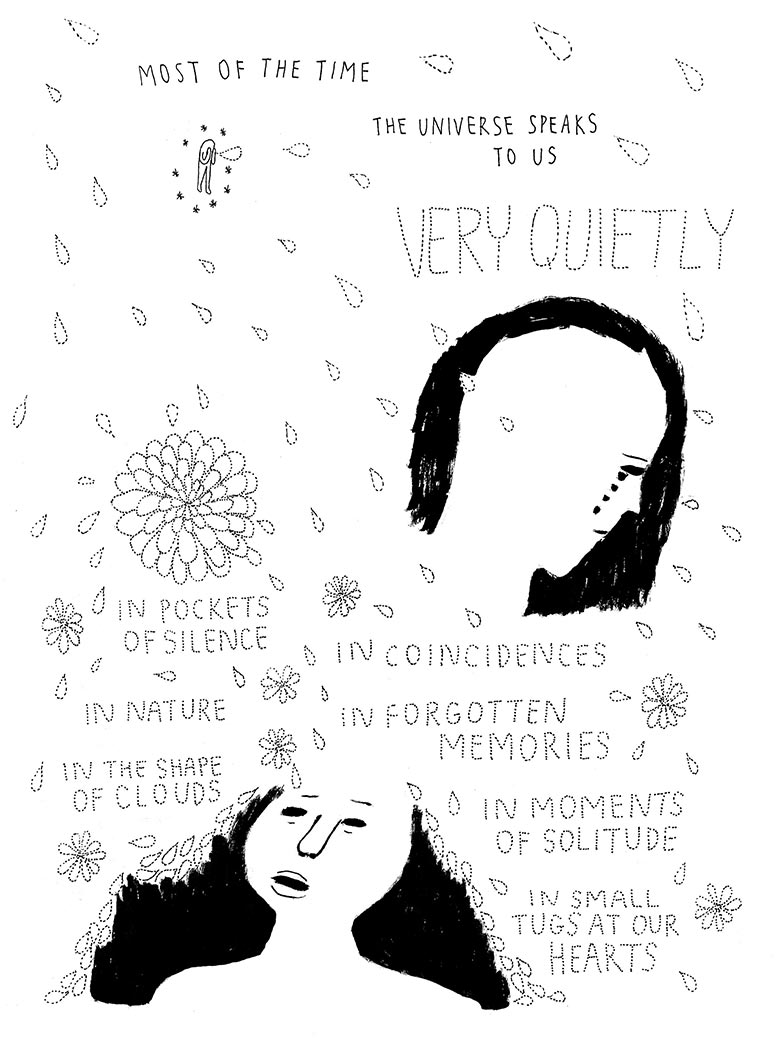
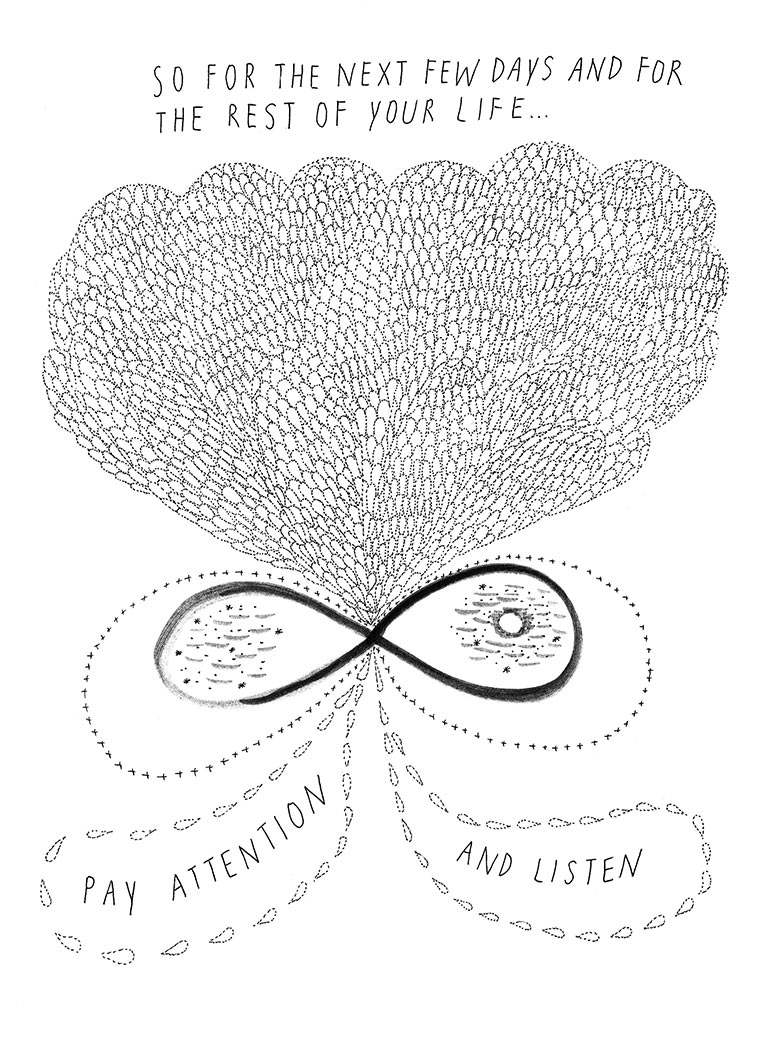
From Your Illustrated Guide To Becoming One With The Universe, 2014
Ω

